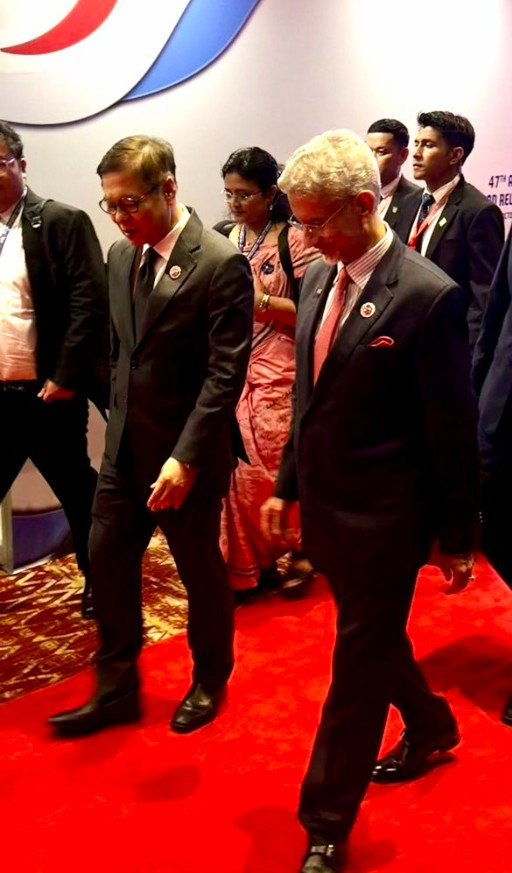
Imphal, April 17 (IANS) Outer Manipur is one of the most critical seats among the 25 Lok Sabha constituencies in the eight northeastern states, both in terms of electoral politics, ethnic issues, and the security scenario, given the recent strife in Manipur.
It is the only Lok Sabha constituency in the northeastern region where polling would be held in two phases – out of its 28 Assembly segments, voting would be held on April 19 in 15 Assembly segments while the remaining 13 would vote in the second phase on April 26.
While the state’s ruling BJP is contesting the Inner Manipur seat, it has extended support to the Naga People’s Front (NPF) nominee Kachui Timothy Zimik, who replaced sitting MP Lorho S. Pfoze, in Outer Manipur, which is reserved for tribals.
The National People’s Party (NPP), led by Meghalaya Chief Minister Conrad K. Sangma, also announced its support for Zimik.
In 2019, NPF’s Pfoze wrested this seat defeating BJP nominee Houlim Shokhopao Mate, while Congress candidate Thangso Baite won the seat in 2014, defeating NPF’s Soso Lorho.
The Congress-led INDIA bloc has put up Alfred Kanngam S. Arthur now.
While two Independents – S. Kho John and Alyson Abonmai – have also filed nominations, the main contest will be between Zimik and Arthur, both Nagas. The community has professed to remain neutral during the nearly year-long ethnic conflict between the Meiteis of the Valley and the Kumi-Zomis of the hills.
However, like people in the Meitei-dominated Valley region, voters in the hills are not very enthusiastic about the election process and feel that peace should come first and elections could have taken place later.
Congress nominee Arthur began his campaign in Churachandpur – the nerve centre of the over 11-month-long ethnic conflict in Manipur between the Meitei and Kuki-Zomi communities, and other hill districts even before his name was announced by the party.
On the other hand, the NPF’s Phungyar unit claimed that the 18th Lok Sabha elections have brought the two political arch-rivals in Manipur under the same roof. The BJP has directed its state unit to extend all possible assistance and rope in the help of regional political parties/satraps like Nagaland’s ruling Nationalist Democratic Progressive Party and Meghalaya’s ruling NPP – both members of the NDA.
The constituency spans Naga-dominated areas of Ukhrul, Chandel, Tamenglong, and Senapati while Kuki-Zomi-dominated districts are Churachandpur, Kangpokpi, Tengnoupal, and Pherzawl.
Out of the 10.36 lakh electorate, Nagas account for over 4.60 lakh and Kuki-Zomis around 3.20 lakh and the remaining are from other communities as the Outer Manipur seat also comprises eight Assembly constituencies of the border areas between the valley and hills, with roughly 2.50 lakh voters.
Earlier, the apex tribal body, the Indigenous Tribal Leaders Forum’s (ITLF) presidential council issued an advisory that no one from the Kuki-Zomi community should file their nomination for the upcoming Lok Sabha election considering the plight and difficulty they are facing.
It, however, urged that as Indian citizens, community members should exercise their right to franchise by voting.
Senior ITLF leader and spokesperson Ginza Vualzong said that no organisation has announced support for any candidate.
“ITLF and Kuki Inpi only announced that there will be no candidates from their sides. So far no restriction has been imposed on the tribals about which candidates to vote for,” Vualzong told IANS.
At least 220 people have been killed, 1,500 injured and 60,000 displaced after the ethnic violence between the Meitei and Kuki-Zomi community broke out on May 3 last year. The riots began after a ‘Tribal Solidarity March’ was organised in the hill districts to protest against the Meitei community’s demand for Scheduled Tribe status.
(Sujit Chakraborty can be contacted at sujit.c@ians.in)








